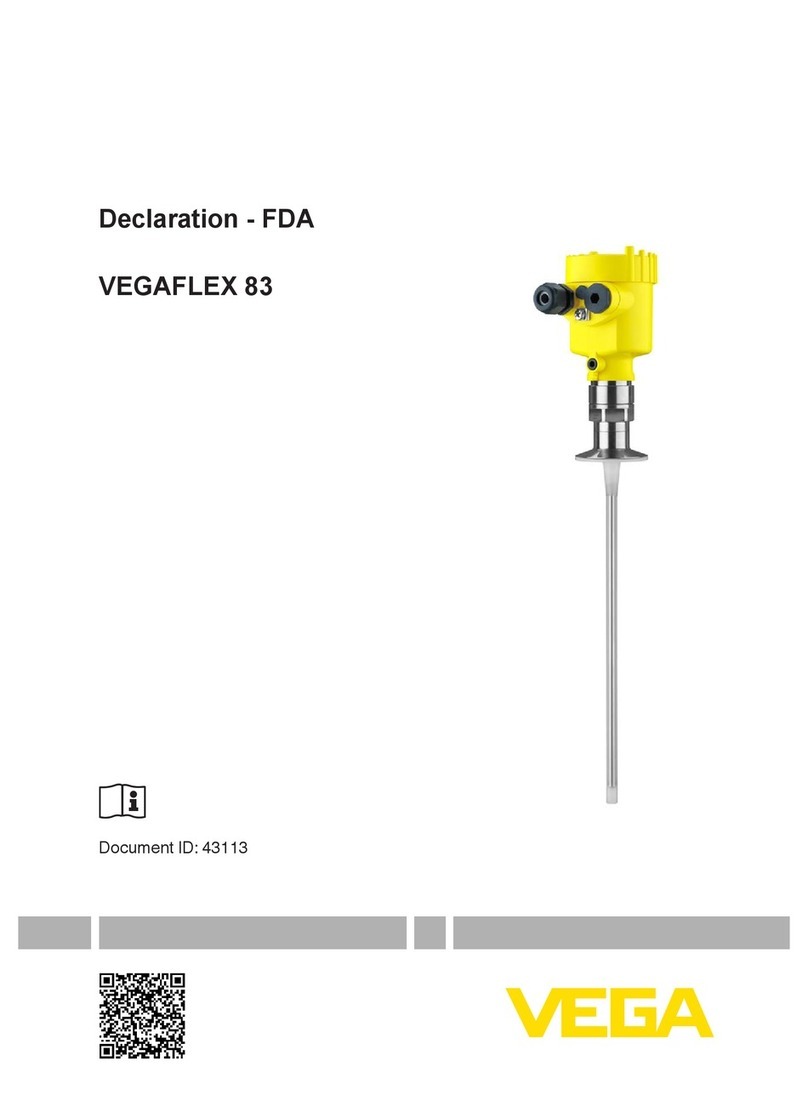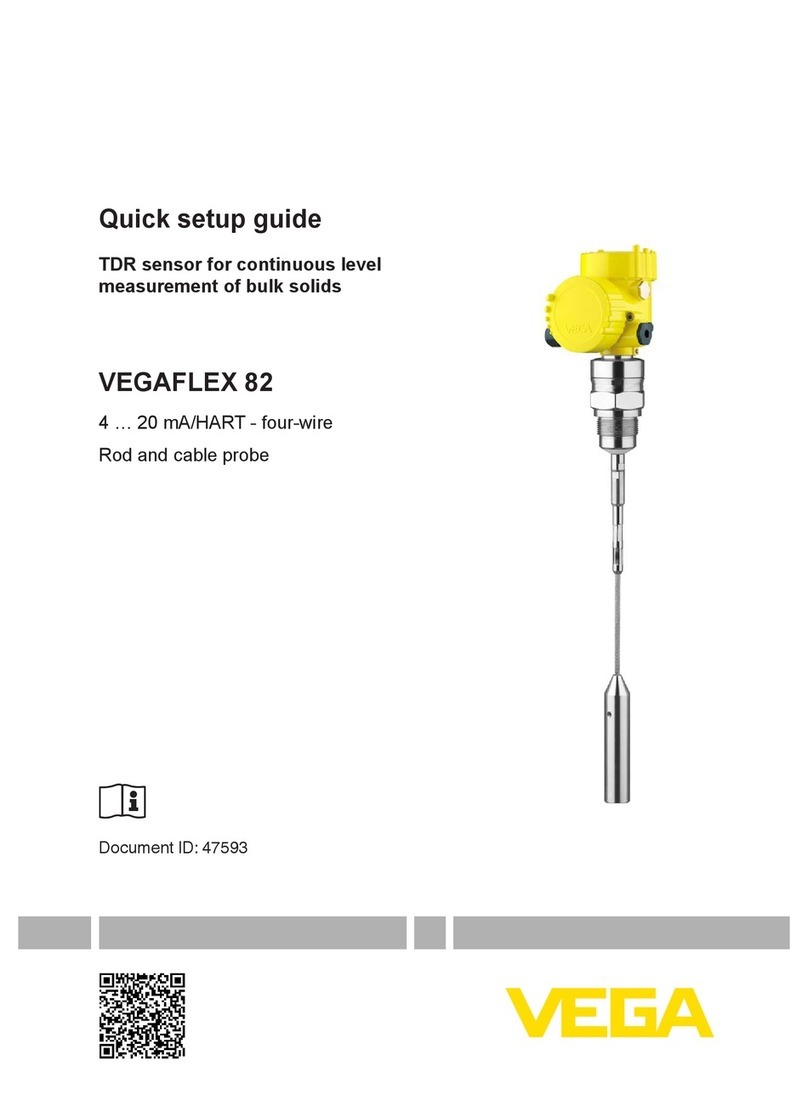Vega VEGAFLEX 86 User manual

Operating Instructions
TDR sensor for continuous level and
interface measurement of liquids
VEGAFLEX 86
Modbus and Levelmaster protocol
Converter version in second chamber
Rod and cable probe
-20 … +250 °C
Document ID: 49481

2
Contents
VEGAFLEX 86 • Modbus and Levelmaster protocol
49481-EN-230605
Contents
1 About this document ............................................................................................................... 4
1.1 Function ........................................................................................................................... 4
1.2 Target group ..................................................................................................................... 4
1.3 Symbols used................................................................................................................... 4
2 For your safety ......................................................................................................................... 5
2.1 Authorised personnel ....................................................................................................... 5
2.2 Appropriate use................................................................................................................ 5
2.3 Warning about incorrect use............................................................................................. 5
2.4 General safety instructions............................................................................................... 5
2.5 Conformity........................................................................................................................ 5
2.6 NAMUR recommendations .............................................................................................. 6
2.7 Installation and operation in the USA and Canada ........................................................... 6
2.8 Environmental instructions ............................................................................................... 6
3 Product description ................................................................................................................. 7
3.1 Conguration.................................................................................................................... 7
3.2 Principle of operation........................................................................................................ 9
3.3 Packaging, transport and storage................................................................................... 11
3.4 Accessories.................................................................................................................... 11
4 Mounting................................................................................................................................. 13
4.1 General instructions ....................................................................................................... 13
4.2 Mounting instructions ..................................................................................................... 14
5 Connecting to power supply and bus system .................................................................... 24
5.1 Preparing the connection ............................................................................................... 24
5.2 Connecting..................................................................................................................... 25
5.3 Wiring plan ..................................................................................................................... 27
5.4 Double chamber housing with VEGADIS-Adapter.......................................................... 28
5.5 Switch-on phase............................................................................................................. 29
6 Set up the sensor with the display and adjustment module............................................. 30
6.1 Adjustment volume......................................................................................................... 30
6.2 Insert display and adjustment module............................................................................ 30
6.3 Adjustment system......................................................................................................... 31
6.4 Parameter adjustment - Quick setup .............................................................................. 33
6.5 Parameter adjustment - Extended adjustment................................................................ 33
6.6 Save parameter adjustment data.................................................................................... 51
7 Set up with smartphone/tablet/PC/notebook via Bluetooth.............................................. 52
7.1 Preparations................................................................................................................... 52
7.2 Connecting..................................................................................................................... 53
7.3 Sensor parameter adjustment........................................................................................ 54
8 Setting up sensor and Modbus interface with PACTware.................................................. 55
8.1 Connect the PC.............................................................................................................. 55
8.2 Parameter adjustment with PACTware............................................................................ 56
8.3 Set instrument address .................................................................................................. 57
8.4 Set up with the quick setup............................................................................................. 58
8.5 Save parameter adjustment data.................................................................................... 60
9 Diagnosis, asset management and service ........................................................................ 61
9.1 Maintenance .................................................................................................................. 61

3
Contents
VEGAFLEX 86 • Modbus and Levelmaster protocol
49481-EN-230605
9.2 Measured value and event memory ............................................................................... 61
9.3 Asset Management function........................................................................................... 62
9.4 Rectify faults................................................................................................................... 65
9.5 Exchanging the electronics module................................................................................ 68
9.6 Exchange or shorten cable/rod ...................................................................................... 69
9.7 Software update ............................................................................................................. 70
9.8 How to proceed if a repair is necessary.......................................................................... 71
10 Dismount................................................................................................................................. 72
10.1 Dismounting steps.......................................................................................................... 72
10.2 Disposal ......................................................................................................................... 72
11 Supplement ............................................................................................................................ 73
11.1 Technical data ................................................................................................................ 73
11.2 Device communication Modbus ..................................................................................... 81
11.3 Modbus register ............................................................................................................. 82
11.4 Modbus RTU commands ............................................................................................... 84
11.5 Levelmaster commands ................................................................................................. 87
11.6 CongurationoftypicalModbushosts ........................................................................... 90
11.7 Dimensions .................................................................................................................... 90
11.8 Industrial property rights................................................................................................. 95
11.9 Trademark ...................................................................................................................... 95
Safety instructions for Ex areas:
TakenoteoftheExspecicsafetyinstructionsforExapplications.
These instructions are attached as documents to each instrument
with Ex approval and are part of the operating instructions.
Editing status: 2023-05-23

4
1 About this document
VEGAFLEX 86 • Modbus and Levelmaster protocol
49481-EN-230605
1 About this document
1.1 Function
This instruction provides all the information you need for mounting,
connection and setup as well as important instructions for mainte-
nance,faultrectication,theexchangeofpartsandthesafetyofthe
user. Please read this information before putting the instrument into
operation and keep this manual accessible in the immediate vicinity
of the device.
1.2 Target group
This operating instructions manual is directed to trained personnel.
Thecontentsofthismanualmustbemadeavailabletothequalied
personnel and implemented.
1.3 Symbols used
Document ID
This symbol on the front page of this instruction refers to the Docu-
ment ID. By entering the Document ID on www.vega.com you will
reach the document download.
Information, note, tip: This symbol indicates helpful additional infor-
mation and tips for successful work.
Note: This symbol indicates notes to prevent failures, malfunctions,
damage to devices or plants.
Caution: Non-observance of the information marked with this symbol
may result in personal injury.
Warning: Non-observance of the information marked with this symbol
may result in serious or fatal personal injury.
Danger: Non-observance of the information marked with this symbol
results in serious or fatal personal injury.
Ex applications
This symbol indicates special instructions for Ex applications.
• List
The dot set in front indicates a list with no implied sequence.
1 Sequence of actions
Numbers set in front indicate successive steps in a procedure.
Disposal
This symbol indicates special instructions for disposal.

5
2 For your safety
VEGAFLEX 86 • Modbus and Levelmaster protocol
49481-EN-230605
2 For your safety
2.1 Authorised personnel
All operations described in this documentation must be carried out
onlybytrained,qualiedpersonnelauthorisedbytheplantoperator.
During work on and with the device, the required personal protective
equipment must always be worn.
2.2 Appropriate use
VEGAFLEX 86 is a sensor for continuous level measurement.
Youcannddetailedinformationabouttheareaofapplicationin
chapter " Product description".
Operational reliability is ensured only if the instrument is properly
usedaccordingtothespecicationsintheoperatinginstructions
manual as well as possible supplementary instructions.
2.3 Warning about incorrect use
Inappropriate or incorrect use of this product can give rise to applica-
tion-specichazards,e.g.vesseloverllthroughincorrectmounting
or adjustment. Damage to property and persons or environmental
contamination can result. Also, the protective characteristics of the
instrument can be impaired.
2.4 General safety instructions
This is a state-of-the-art instrument complying with all prevailing
regulations and directives.The instrument must only be operated in a
technicallyawlessandreliablecondition.Theoperatorisresponsi-
ble for the trouble-free operation of the instrument. When measuring
aggressive or corrosive media that can cause a dangerous situation
if the instrument malfunctions, the operator has to implement suitable
measures to make sure the instrument is functioning properly.
The safety instructions in this operating instructions manual, the na-
tional installation standards as well as the valid safety regulations and
accident prevention rules must be observed by the user.
For safety and warranty reasons, any invasive work on the device
beyond that described in the operating instructions manual may be
carried out only by personnel authorised by the manufacturer. Arbi-
traryconversionsormodicationsareexplicitlyforbidden.Forsafety
reasons,onlytheaccessoryspeciedbythemanufacturermustbe
used.
To avoid any danger, the safety approval markings and safety tips on
the device must also be observed.
2.5 Conformity
The device complies with the legal requirements of the applicable
country-specicdirectivesortechnicalregulations.Weconrmcon-
formity with the corresponding labelling.

6
2 For your safety
VEGAFLEX 86 • Modbus and Levelmaster protocol
49481-EN-230605
The corresponding conformity declarations can be found on our
homepage.
Electromagnetic compatibility
Instruments in four-wire or Ex d ia version are designed for use in an
industrial environment. Nevertheless, electromagnetic interference
from electrical conductors and radiated emissions must be taken into
account, as is usual with class A instruments according to EN 61326-
1.Iftheinstrumentisusedinadierentenvironment,theelectromag-
netic compatibility to other instruments must be ensured by suitable
measures.
2.6 NAMUR recommendations
NAMUR is the automation technology user association in the process
industry in Germany. The published NAMUR recommendations are
acceptedasthestandardineldinstrumentation.
ThedevicefullstherequirementsofthefollowingNAMURrecom-
mendations:
• NE 21 – Electromagnetic compatibility of equipment
• NE53–Compatibilityofelddevicesanddisplay/adjustment
components
• NE107–Self-monitoringanddiagnosisofelddevices
For further information see www.namur.de.
2.7 Installation and operation in the USA and
Canada
This information is only valid for USA and Canada. Hence the follow-
ing text is only available in the English language.
Installations in the US shall comply with the relevant requirements of
the National Electrical Code (NEC - NFPA 70) (USA).
Installations in Canada shall comply with the relevant requirements of
the Canadian Electrical Code (CEC Par I) (Canada).
2.8 Environmental instructions
Protection of the environment is one of our most important duties.
That is why we have introduced an environment management system
with the goal of continuously improving company environmental pro-
tection.Theenvironmentmanagementsystemiscertiedaccording
to DIN EN ISO 14001.
Pleasehelpusfullthisobligationbyobservingtheenvironmental
instructions in this manual:
• Chapter " Packaging, transport and storage"
• Chapter " Disposal"

7
3 Product description
VEGAFLEX 86 • Modbus and Levelmaster protocol
49481-EN-230605
3 Product description
3.1 Conguration
The scope of delivery encompasses:
• Sensor VEGAFLEX 86
• Optional accessory
• Optionally integrated Bluetooth module
The further scope of delivery encompasses:
• Documentation
– Quick setup guide VEGAFLEX 86
– Instructions for optional instrument features
– Ex-specic"Safety instructions" (with Ex versions)
– Ifnecessary,furthercerticates
Information:
Optional instrument features are also described in this operating
instructions manual.The respective scope of delivery results from the
orderspecication.
This operating instructions manual applies to the following instrument
versions:
• Hardware from 1.0.0
• Software from 1.3.0
• OnlyforinstrumentversionswithoutSILqualication
Thetypelabelcontainsthemostimportantdataforidenticationand
use of the instrument:
Scope of delivery
Scope of this operating
instructions
Type label

8
3 Product description
VEGAFLEX 86 • Modbus and Levelmaster protocol
49481-EN-230605
2
1
12
13
14
15
11
10
5
3
6
4
7
8
9
Fig. 1: Layout of the type label (example)
1 Instrument type
2 Product code
3 Approvals
4 Power supply and signal output, electronics
5 Protection rating
6 Probe length (measurement accuracy optional)
7 Process and ambient temperature, process pressure
8 Material wetted parts
9 Order number
10 Serial number of the instrument
11 Symbol of the device protection class
12 ID numbers, instrument documentation
13 Reminder to observe the instrument documentation
14 NotiedauthorityforCEmarking
15 Approval directives
The type label contains the serial number of the instrument. With it
youcanndthefollowinginstrumentdataonourhomepage:
• Product code (HTML)
• Delivery date (HTML)
• Order-specicinstrumentfeatures(HTML)
• Operating instructions and quick setup guide at the time of ship-
ment (PDF)
• Testcerticate(PDF)-optional
Move to " www.vega.com"andenterinthesearcheldtheserial
number of your instrument.
Alternatively, you can access the data via your smartphone:
• Download the VEGA Tools app from the " Apple App Store" or the
" Google Play Store"
• Scan the QR-code on the type label of the device or
• Enter the serial number manually in the app
Theinstrumentcontainstwodierentelectronicsinitshousingcham-
bers:
• The Modbus electronics for power supply and communication with
the Modbus-RTU
Serial number - Instru-
ment search
Electronics design

9
3 Product description
VEGAFLEX 86 • Modbus and Levelmaster protocol
49481-EN-230605
• The sensor electronics for the actual measuring tasks
2
1
Fig. 2: Position of Modbus and sensor electronics
1 Modbus electronics
2 Sensor electronics
3.2 Principle of operation
The VEGAFLEX 86 is a level sensor with cable or rod probe for con-
tinuous level or interface measurement, especially for applications in
high temperatures up to +250° C (482° F).
High frequency microwave pulses are guided along a steel cable or
a rod. Upon reaching the medium surface, the microwave pulses are
reected.Therunningtimeisevaluatedbytheinstrumentandoutput
as level.
d
h
1
Fig. 3: Level measurement
1 Sensorreferenceplane(sealsurfaceoftheprocesstting)
d Distance to the level
h Height - Level
High frequency microwave impulses are guided along a steel cable or
rod. Upon reaching the medium surface, a part of the microwave im-
pulsesisreected.Theotherpartpassesthroughtheupperproduct
andisreectedbytheinterface.Therunningtimestothetwoproduct
layers are processed by the instrument.
Application area
Functional principle -
level measurement
Functional principle - in-
terface measurement

10
3 Product description
VEGAFLEX 86 • Modbus and Levelmaster protocol
49481-EN-230605
TS
d1
h1
h2
d2
1
L2
L1
L3
Fig. 4: Interface measurement
1 Sensorreferenceplane(sealsurfaceoftheprocesstting)
d1 Distance to the interface
d2 Distance to the level
TS Thickness of the upper medium (d1 - d2)
h1 Height - Interface
h2 Height - Level
L1 Lower medium
L2 Upper medium
L3 Gas phase
Upper medium (L2)
• The upper medium must not be conductive
• The dielectric constant of the upper medium or the actual distance
to the interface must be known (input required). Min. dielectric
constant:1.6.Youcanndalistofdielectricconstantsonour
home page.
• The composition of the upper medium must be stable, no varying
products or mixtures
• Theuppermediummustbehomogeneous,nostratications
within the medium
• Min. thickness of the upper medium 50 mm (1.97 in)
• Clear separation from the lower medium, emulsion phase or detri-
tus layer max. 50 mm (1.97 in)
• If possible, no foam on the surface
Lower medium (L1)
• The dielectric constant must be 10 higher than the dielectric
constant of the upper medium, preferably electrically conductive.
Example: upper medium dielectric constant 2, lower medium at
least dielectric constant 12.
Gas phase (L3)
• Air or gas mixture
• Gas phase - dependent on the application, gas phase does not
always exist (d2 = 0)
Prerequisites for inter-
face measurement

11
3 Product description
VEGAFLEX 86 • Modbus and Levelmaster protocol
49481-EN-230605
The instrument is always preset to the application " Level measure-
ment".
For the interface measurement, you can select the requested output
signal with the setup.
3.3 Packaging, transport and storage
Your instrument was protected by packaging during transport. Its
capacity to handle normal loads during transport is assured by a test
based on ISO 4180.
The packaging consists of environment-friendly, recyclable card-
board. For special versions, PE foam or PE foil is also used. Dispose
of the packaging material via specialised recycling companies.
Transport must be carried out in due consideration of the notes on the
transport packaging. Nonobservance of these instructions can cause
damage to the device.
The delivery must be checked for completeness and possible transit
damage immediately at receipt. Ascertained transit damage or con-
cealed defects must be appropriately dealt with.
Up to the time of installation, the packages must be left closed and
stored according to the orientation and storage markings on the
outside.
Unless otherwise indicated, the packages must be stored only under
the following conditions:
• Not in the open
• Dry and dust free
• Not exposed to corrosive media
• Protected against solar radiation
• Avoiding mechanical shock and vibration
• Storage and transport temperature see chapter " Supplement -
Technical data - Ambient conditions"
• Relative moisture 20 … 85 %
With instrument weights of more than 18 kg (39.68 lbs) suitable and
approved equipment must be used for lifting and carrying.
3.4 Accessories
The instructions for the listed accessories can be found in the down-
load area on our homepage.
The display and adjustment module is used for measured value indi-
cation, adjustment and diagnosis.
The integrated Bluetooth module (optional) enables wireless adjust-
ment via standard adjustment devices.
The interface adapter VEGACONNECT enables the connection of
communication-capable instruments to the USB interface of a PC.
Output signal
Packaging
Transport
Transport inspection
Storage
Storage and transport
temperature
Lifting and carrying
Display and adjustment
module
VEGACONNECT

12
3 Product description
VEGAFLEX 86 • Modbus and Levelmaster protocol
49481-EN-230605
The VEGADIS 81 is an external display and adjustment unit for VEGA
plics®sensors.
The VEGADIS adapter is an accessory part for sensors with double
chamber housing. It enables the connection of VEGADIS 81 to the
sensor housing via an M12 x 1 plug.
VEGADIS 82 is suitable for measured value indication and adjustment
of sensors with HART protocol. It is looped into the 4 … 20 mA/HART
signal cable.
The protective cover protects the sensor housing against soiling and
intense heat from solar radiation.
Screwedangesareavailableindierentversionsaccordingtothe
following standards: DIN 2501, EN 1092-1, BS 10, ASME B 16.5,
JIS B 2210-1984, GOST 12821-80.
If the standard sensor housing is too big or in case of strong vibra-
tions, an external housing can be used.
Then the sensor housing is made of stainless steel. The electronics is
located in the external housing which can be mounted in a distance of
up to 10 m (32.8 ft) to the sensor by using a connection cable.
The combination of a bypass tube and a VEGAFLEX 86 enables con-
tinuous level measurement outside the vessel.The bypass consists
of a standpipe which is mounted as a communicating container on
thesideofthevesselviatwoprocessttings.Thiskindofmounting
ensures that the level in the standpipe and the level in the vessel are
the same.
Thelengthandtheprocessttingscanbeconguredindividually.No
dierentconnectionversionsavailable.
Youcanndfurtherinformationintheoperatinginstructionsmanual"
BypasstubeVEGAPASS81".
If you mount the VEGAFLEX 86 in a bypass tube or standpipe, you
have to avoid contact to the bypass tube by using a spacer at the
probe end.
If there is a risk of the cable probe touching the vessel wall during
operation due to product movements or agitators, etc., the measuring
probe can be strained.
Cables with a diameter up to 8 mm (0.315 in) can thus be strained.
For this purpose there is an internal thread (M12 or M8) in the gravity
weight.
VEGADIS 81
VEGADIS adapter
VEGADIS 82
Protective cover
Flanges
External housing
Bypass pipe
Centering
Fixing facility

13
4 Mounting
VEGAFLEX 86 • Modbus and Levelmaster protocol
49481-EN-230605
4 Mounting
4.1 General instructions
Deviceswiththreadedttingarescrewedintotheprocessttingwith
a suitable wrench via the hexagon.
See chapter " Dimensions"forwrenchsize.
Warning:
The housing or the electrical connection may not be used for screw-
ing in! Depending on the device version, tightening can cause dam-
age, e. g. to the rotation mechanism of the housing.
Protect your instrument against moisture ingress through the following
measures:
• Use a suitable connection cable (see chapter " Connectingto
power supply")
• Tighten the cable gland or plug connector
• Lead the connection cable downward in front of the cable entry or
plug connector
This applies mainly to outdoor installations, in areas where high
humidity is expected (e.g. through cleaning processes) and on cooled
or heated vessels.
Note:
Make sure that during installation or maintenance no moisture or dirt
can get inside the instrument.
To maintain the housing protection, make sure that the housing lid is
closed during operation and locked, if necessary.
Metric threads
In the case of instrument housings with metric thread, the cable
glands are screwed in at the factory. They are sealed with plastic
plugs as transport protection.
You have to remove these plugs before electrical connection.
NPT thread
In the case of instrument housings with self-sealing NPT threads, it is
not possible to have the cable entries screwed in at the factory.The
free openings for the cable glands are therefore covered with red dust
protection caps as transport protection.The dust protection caps do
notprovidesucientprotectionagainstmoisture.
Prior to setup you have to replace these protective caps with ap-
proved cable glands or close the openings with suitable blind plugs.
Note:
For safety reasons, the instrument must only be operated within the
permissibleprocessconditions.Youcannddetailedinformationon
the process conditions in chapter " Technical data" of the operating
instructions or on the type label.
Screwing in
Protection against mois-
ture
Cable glands
Process conditions

14
4 Mounting
VEGAFLEX 86 • Modbus and Levelmaster protocol
49481-EN-230605
Hence make sure before mounting that all parts of the instrument ex-
posed to the process are suitable for the existing process conditions.
These are mainly:
• Active measuring component
• Processtting
• Process seal
Process conditions in particular are:
• Process pressure
• Process temperature
• Chemical properties of the medium
• Abrasionandmechanicalinuences
4.2 Mounting instructions
Mount the device in such a way that the distance to vessel installa-
tions or to the vessel wall is at least 300 mm (12 in). In non-metallic
vessels, the distance to the vessel wall should be at least 500 mm
(19.7 in).
During operation, the probe must not touch any installations or the
vessel wall. If necessary, fasten the probe end.
In vessels with conical bottom it can be advantageous to mount the
device in the center of the vessel, as measurement is then possible
nearly down to the lowest point of the bottom. Keep in mind that
measurement all the way down to the tip of the probe may not be pos-
sible.The exact value of the min. distance (lower blocking distance) is
stated in chapter " Technical data".
Fig. 5: Vessel with conical bottom
Plastic vessel/Glass vessel
The guided microwave principle requires a metallic surface on the
processtting.Therefore,inplasticvessels,etc.,useaninstru-
mentversionwithange(fromDN50)orplaceametalsheet
(ø>200mm/8in)beneaththeprocessttingwhenscrewingitin.
Installation position
Type of vessel

15
4 Mounting
VEGAFLEX 86 • Modbus and Levelmaster protocol
49481-EN-230605
Makesurethattheplatehasdirectcontactwiththeprocesstting.
When mounting rod or cable probes in vessels without metal walls,
e.g.inplasticvessels,themeasuredvaluecanbeinuencedby
strongelectromagneticelds(emittedinterferenceaccordingto
EN 61326: class A). In this case, use a probe with coaxial version.
1 2
Fig. 6: Mounting in non-metallic vessel
1 Flange
2 Metal sheet
Ifpossible,avoidnozzles.Mountthesensorushwiththevesseltop.
Ifthisisnotpossible,useshortnozzleswithsmalldiameter.
Highernozzlesornozzleswithabiggerdiametercangenerallybe
used.They can, however, increase the upper blocking distance.
Check if this is relevant for your measurement.
In such cases, always carry out a false signal suppression after
mounting.Youcanndfurtherinformationunder"Setup procedure".
≤ 150 mm (5.91")
≤ 100 mm (3.94")
h
d
dh
DN40 ... DN150
> DN150 ... DN200
Fig. 7: Mounting socket
Whenweldingthenozzle,makesurethatthenozzleisushwiththe
vessel top.
Nozzle

16
4 Mounting
VEGAFLEX 86 • Modbus and Levelmaster protocol
49481-EN-230605
1 2
Fig.8:Nozzlemustbeinstalledush
1 Unfavourable mounting
2 Nozzleush-optimummounting
Before beginning the welding work, remove the electronics module
from the sensor. By doing this, you avoid damage to the electronics
through inductive coupling.
Donotmounttheinstrumentsinorabovethellingstream.Makesure
thatyoudetectthemediumsurface,nottheinowingproduct.
Fig.9:Mountingofthesensorwithinowingmedium
The reference plane for the measuring range of the sensors is the
sealingsurfaceofthethreadorange.
Keep in mind that a min. distance must be maintained below the
reference plane and possibly also at the end of the probe - measure-
Welding work
Inowingmedium
Measuring range

17
4 Mounting
VEGAFLEX 86 • Modbus and Levelmaster protocol
49481-EN-230605
ment in these areas is not possible (blocking distance).The length
of the cable can be used all the way to the end only when measuring
conductiveproducts.Theseblockingdistancesfordierentmediums
are listed in chapter " Technical data". Keep in mind for the adjustment
that the default setting for the measuring range refers to water.
Theprocessttingmustbesealedifthereisgaugeorlowpressure
in the vessel. Before use, check if the sealing material is resistant
against the measured product and the process temperature.
Themax.permissiblepressureisspeciedinchapter"Technical
data" or on the type label of the sensor.
Standpipes or bypass tubes are normally metal tubes with a diameter
of 30 … 200 mm (1.18 … 7.87 in). Up to a diameter of 80 mm (3.15
in) such a tube corresponds to a coax measuring probe. Lateral inlets
inbypasstubesdonotinuencethemeasurement.
Measuring probes can be mounted in bypass tubes up to DN 200.
For bypass tubes, select the probe length such that the blocking
distanceoftheprobeisaboveandbelowthelowerlateralllingopen-
ings of the bypass tube.You can thus measure the complete range of
the medium in the bypass tube (h).When designing the bypass tube,
keep the blocking distance of the probe in mind and select the length
ofthebypasstubeabovetheupperlateralllingopeningaccordingly.
Microwaves can penetrate many plastics.This is why plastic tubes are
problematic for measurement applications. If durability is no problem,
we recommend the use of uncoated metal standpipes.
When the VEGAFLEX 86 is used in bypass tubes, contact with the
tube wall must be avoided.We recommend for this purpose a cable
probe with centering weight.
Caution:
When mounting, make sure that the cable is straight over its entire
length. A kink in the cable can cause measurement errors and contact
with the tube.
With rod probes, a spacer is generally not required. However, if there
is a risk of the rod probe being pressed against the tube wall by in-
owingmedium,youshouldmountaspacerattheprobeendtoavoid
contact with the tube wall. In the case of cable probes, the cable can
be strained.
Keep in mind that the lower blocking distance underneath the spacer
increases if spacers are used.
Buildupcanformonthespacers.Strongbuildupcaninuencethe
measurement.
Pressure
Bypass tubes

18
4 Mounting
VEGAFLEX 86 • Modbus and Levelmaster protocol
49481-EN-230605
12
h
Fig. 10: Mounting in a bypass tube - Position of the spacer or the centering
weight
1 Rod probe with spacer (steel)
2 Cableprobewithcenteringweight
h Measurable tube section
Note:
Measurement in a standpipe is not recommended for extremely adhe-
sive products. In case of slight buildup, you should choose a bypass
tube with bigger diameter.
Instructions for the measurement:
• The 100 % point in bypass tubes should be below the upper tube
connection to the vessel.
• The 0 % point in bypass tubes should be above the lower tube
connection to the vessel.
• A false signal suppression with installed sensor is generally rec-
ommended to achieve the best possible accuracy.
Standpipes or surge pipes are normally metal tubes with a diameter
of 30 … 200 mm (1.18 … 7.87 in). Up to a diameter of 80 mm (3.15
in), such a pipe corresponds to a coax measuring probe. It does not
matter if the standpipe is perforated or slotted for better mixing.
Measuring probes can be mounted in standpipes up to DN 200.
For standpipes, select the probe length such that the upper blocking
distance of the probe is above the upper ventilation hole. This allows
you to measure the total level range of the medium in the standpipe.
When designing the standpipe, keep the upper blocking distance of
Standpipes

19
4 Mounting
VEGAFLEX 86 • Modbus and Levelmaster protocol
49481-EN-230605
theprobeinmindandplanthelengthabovetheupperlaterallling
opening accordingly.
Microwaves can penetrate many plastics.This is why plastic tubes are
problematic for measurement applications. If durability is no problem,
we recommend the use of uncoated metal standpipes.
When the VEGAFLEX 86 is used in standpipes, contact with the tube
wall must be avoided.We recommend for this purpose a cable probe
with centering weight.
Caution:
When mounting, make sure that the cable is straight over its entire
length. A kink in the cable can cause measurement errors and contact
with the tube.
With rod probes, a spacer is generally not required. However, if there
is a risk of the rod probe being pressed against the tube wall by in-
owingmedium,youshouldmountaspacerattheprobeendtoavoid
contact with the tube wall. In the case of cable probes, the cable can
be strained.
Keep in mind that the lower blocking distance underneath the spacer
increases if spacers are used.
Buildupcanformonthespacers.Strongbuildupcaninuencethe
measurement.

20
4 Mounting
VEGAFLEX 86 • Modbus and Levelmaster protocol
49481-EN-230605
≥ 10 mm
(0.39")
≥ 10 mm
(0.39")
ø 150 - 200 mm
(5.91 - 7.87")
ø 150 - 200 mm
(5.91 - 7.87")
h
1
2
AB
3
Fig. 11: Mounting in a standpipe
1 Holes (for mixing)
2 Standpipe - vertically mounted - max. deviation 10 mm (0.4 in)
3 Ventilation opening
A Rod probe with spacer (steel)
B Cableprobewithcenteringweight
Note:
Measurement in a standpipe is not recommended for extremely
adhesive products. In case of slight buildup, you should choose a
standpipe with bigger diameter.
Instructions for the measurement:
• The 100 % point with standpipes should be below the upper
ventilation hole.
• The 0 % point in standpipes should be above the gravity or center-
ing weight.
• A false signal suppression with installed sensor is generally rec-
ommended to achieve the best possible accuracy.
Other manuals for VEGAFLEX 86
15
Table of contents
Other Vega Accessories manuals

Vega
Vega VEGAPULS 69 User manual

Vega
Vega VEGAPULS 66 User manual
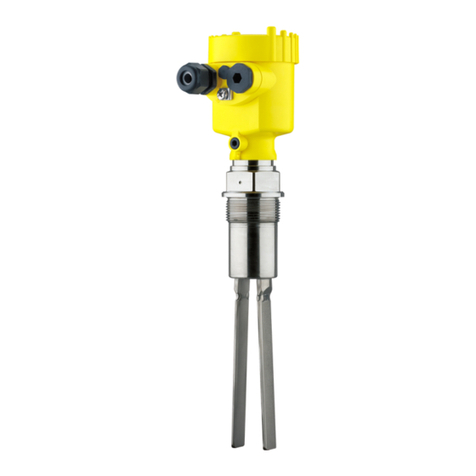
Vega
Vega VEGAWAVE 61 Instruction Manual

Vega
Vega VEGAFLEX 86 User manual
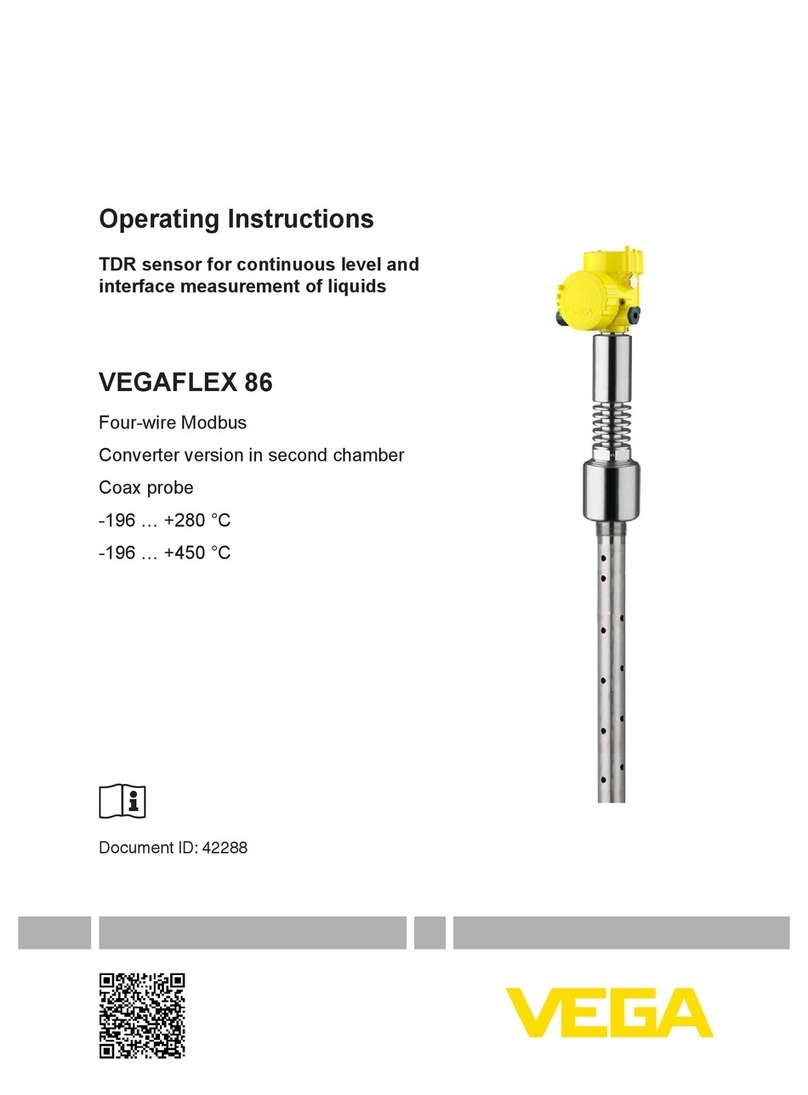
Vega
Vega VEGAFLEX 86 User manual

Vega
Vega VEGAPULS 62 User manual
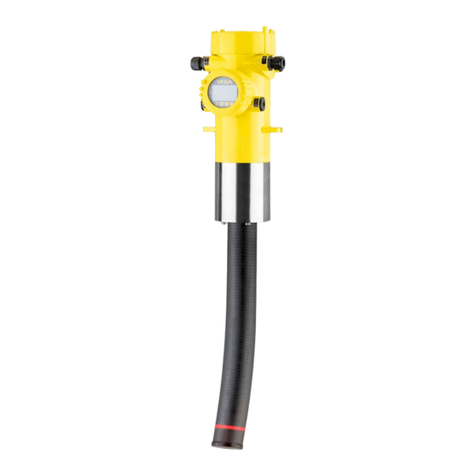
Vega
Vega FIBERTRAC 32 User manual

Vega
Vega VEGAPULS 69 User manual
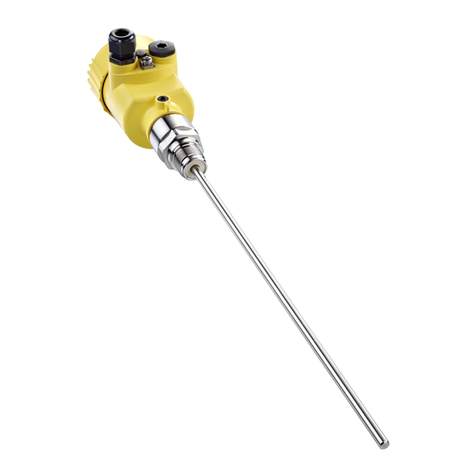
Vega
Vega VEGAFLEX 81 User manual

Vega
Vega VEGAFLEX 82 User manual

Vega
Vega VEGASON 61 User manual

Vega
Vega VEGAPULS 69 User manual
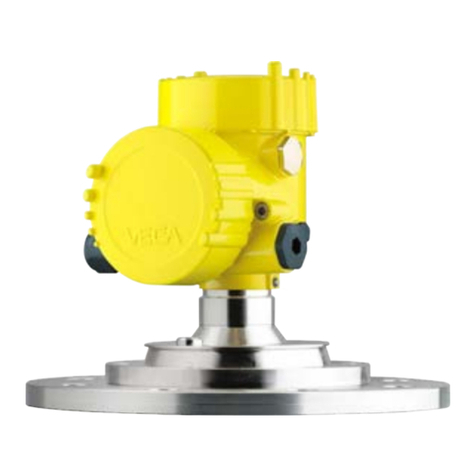
Vega
Vega VEGAPULS 69 User manual

Vega
Vega VEGAPULS 68 User manual

Vega
Vega VEGAPULS 64 User manual

Vega
Vega SOLITRAC 31 User manual
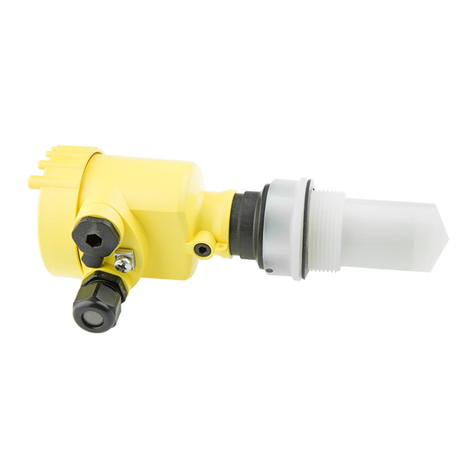
Vega
Vega VEGAPULS 61 User manual
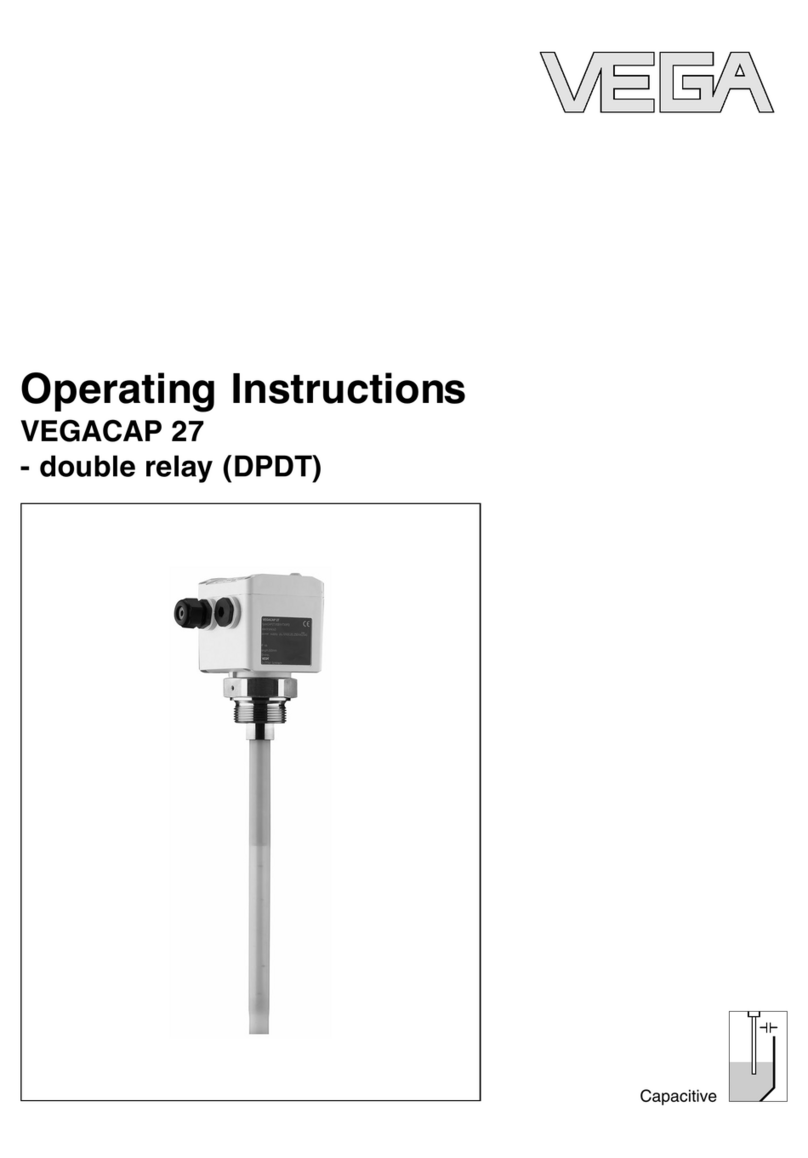
Vega
Vega VEGACAP 27 User manual
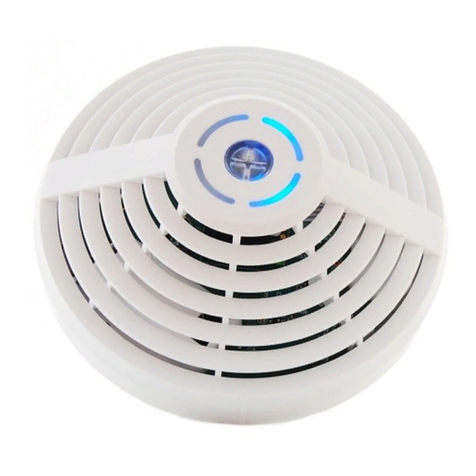
Vega
Vega SMART-SS0102 User manual

Vega
Vega VEGAPULS 66 User manual


